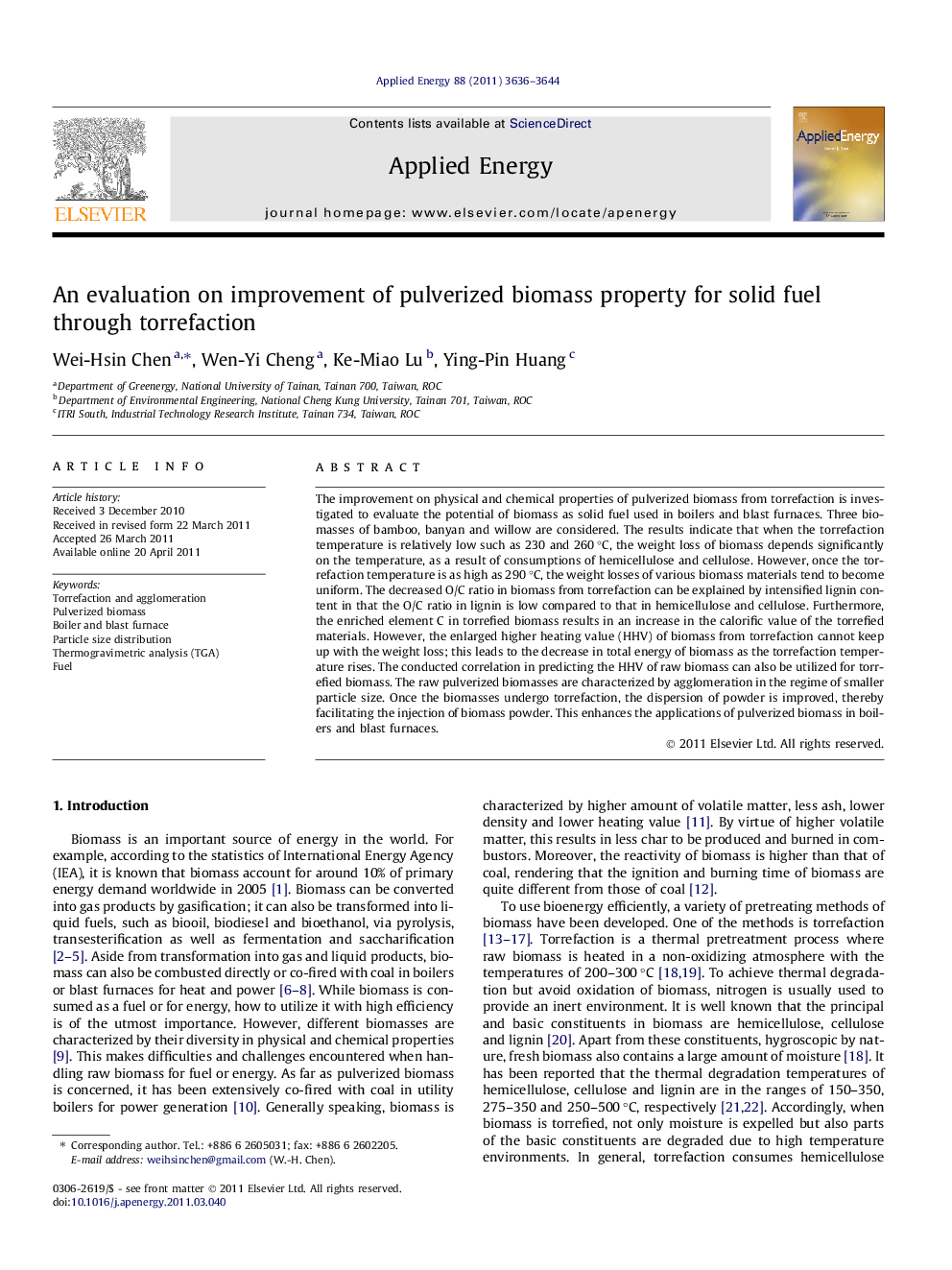| Article ID | Journal | Published Year | Pages | File Type |
|---|---|---|---|---|
| 244171 | Applied Energy | 2011 | 9 Pages |
The improvement on physical and chemical properties of pulverized biomass from torrefaction is investigated to evaluate the potential of biomass as solid fuel used in boilers and blast furnaces. Three biomasses of bamboo, banyan and willow are considered. The results indicate that when the torrefaction temperature is relatively low such as 230 and 260 °C, the weight loss of biomass depends significantly on the temperature, as a result of consumptions of hemicellulose and cellulose. However, once the torrefaction temperature is as high as 290 °C, the weight losses of various biomass materials tend to become uniform. The decreased O/C ratio in biomass from torrefaction can be explained by intensified lignin content in that the O/C ratio in lignin is low compared to that in hemicellulose and cellulose. Furthermore, the enriched element C in torrefied biomass results in an increase in the calorific value of the torrefied materials. However, the enlarged higher heating value (HHV) of biomass from torrefaction cannot keep up with the weight loss; this leads to the decrease in total energy of biomass as the torrefaction temperature rises. The conducted correlation in predicting the HHV of raw biomass can also be utilized for torrefied biomass. The raw pulverized biomasses are characterized by agglomeration in the regime of smaller particle size. Once the biomasses undergo torrefaction, the dispersion of powder is improved, thereby facilitating the injection of biomass powder. This enhances the applications of pulverized biomass in boilers and blast furnaces.
